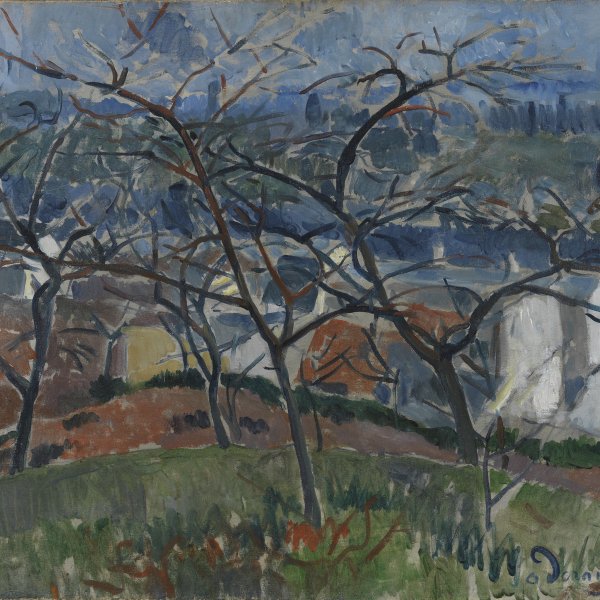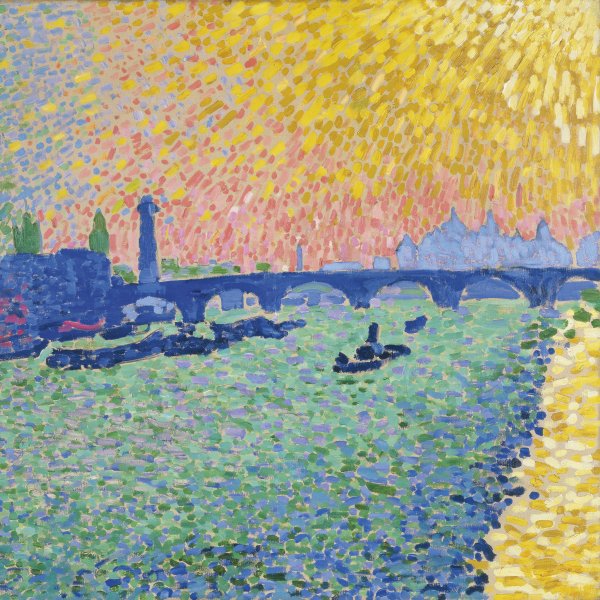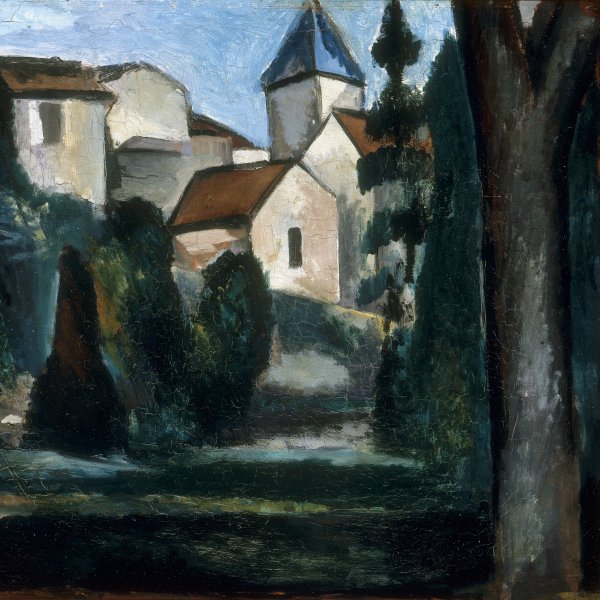André Derain
Chatou, 1880-Garches, 1954
The French painter André Derain was one of the foremost practitioners of Fauvism and one of the most prominent figures of the modern movement.
In 1898 Derain abandoned his engineering studies in order to take up painting. He began to attend the Académie Carrière while making sketches at the Musée du Louvre. He was initially greatly influenced by Paul Cézanne and was later fascinated by the work of Vincent van Gogh on display at the Galerie Bernheim-Jeune. During these initial years he shared a studio with Maurice de Vlaminck in Chatou and had a close relationship with Henri Matisse, with whom he spent the summer of 1905 in Collioure, where he began to employ the pointillist technique. Under the influence of Paul Signac’s painting, Derain applied pure colours straight from the tube onto a canvas with a white ground in thick, square dabs of the brush that gave the picture surface the appearance of a mosaic. When Derain’s works were shown alongside those of Matisse, Vlaminck and other young artists at the Salon d’Automne of 1905, they were described as fauves (wild beasts) by the critic Louis Vauxcelles.
The dealer Ambroise Vollard sent Derain to London from March 1906 to February 1907 in order to repeat Claude Monet’s experience a few years earlier in his series on the river Thames. The works he painted in the English capital mark the height of his Fauvist period.
In 1906 Derain began to frequent the intellectual crowd of Montmartre (Max Jacob, André Salmon and Guillaume Apollinaire) and in 1907 he befriended Georges Braque and Pablo Picasso. He shared with them his new interest in primitive art, which influenced his stone sculptures. In 1908 he destroyed much of his oeuvre in order to concentrate on a series of landscapes based on Cézanne’s Constructivism and a certain influence of the incipient Cubism of Braque and Picasso.
After he returned from four years serving on the front during the First World War, his painting became more classical and was influenced by Jean-Baptiste-Camille Corot and the Great Masters of Classicism.
In 1898 Derain abandoned his engineering studies in order to take up painting. He began to attend the Académie Carrière while making sketches at the Musée du Louvre. He was initially greatly influenced by Paul Cézanne and was later fascinated by the work of Vincent van Gogh on display at the Galerie Bernheim-Jeune. During these initial years he shared a studio with Maurice de Vlaminck in Chatou and had a close relationship with Henri Matisse, with whom he spent the summer of 1905 in Collioure, where he began to employ the pointillist technique. Under the influence of Paul Signac’s painting, Derain applied pure colours straight from the tube onto a canvas with a white ground in thick, square dabs of the brush that gave the picture surface the appearance of a mosaic. When Derain’s works were shown alongside those of Matisse, Vlaminck and other young artists at the Salon d’Automne of 1905, they were described as fauves (wild beasts) by the critic Louis Vauxcelles.
The dealer Ambroise Vollard sent Derain to London from March 1906 to February 1907 in order to repeat Claude Monet’s experience a few years earlier in his series on the river Thames. The works he painted in the English capital mark the height of his Fauvist period.
In 1906 Derain began to frequent the intellectual crowd of Montmartre (Max Jacob, André Salmon and Guillaume Apollinaire) and in 1907 he befriended Georges Braque and Pablo Picasso. He shared with them his new interest in primitive art, which influenced his stone sculptures. In 1908 he destroyed much of his oeuvre in order to concentrate on a series of landscapes based on Cézanne’s Constructivism and a certain influence of the incipient Cubism of Braque and Picasso.
After he returned from four years serving on the front during the First World War, his painting became more classical and was influenced by Jean-Baptiste-Camille Corot and the Great Masters of Classicism.




